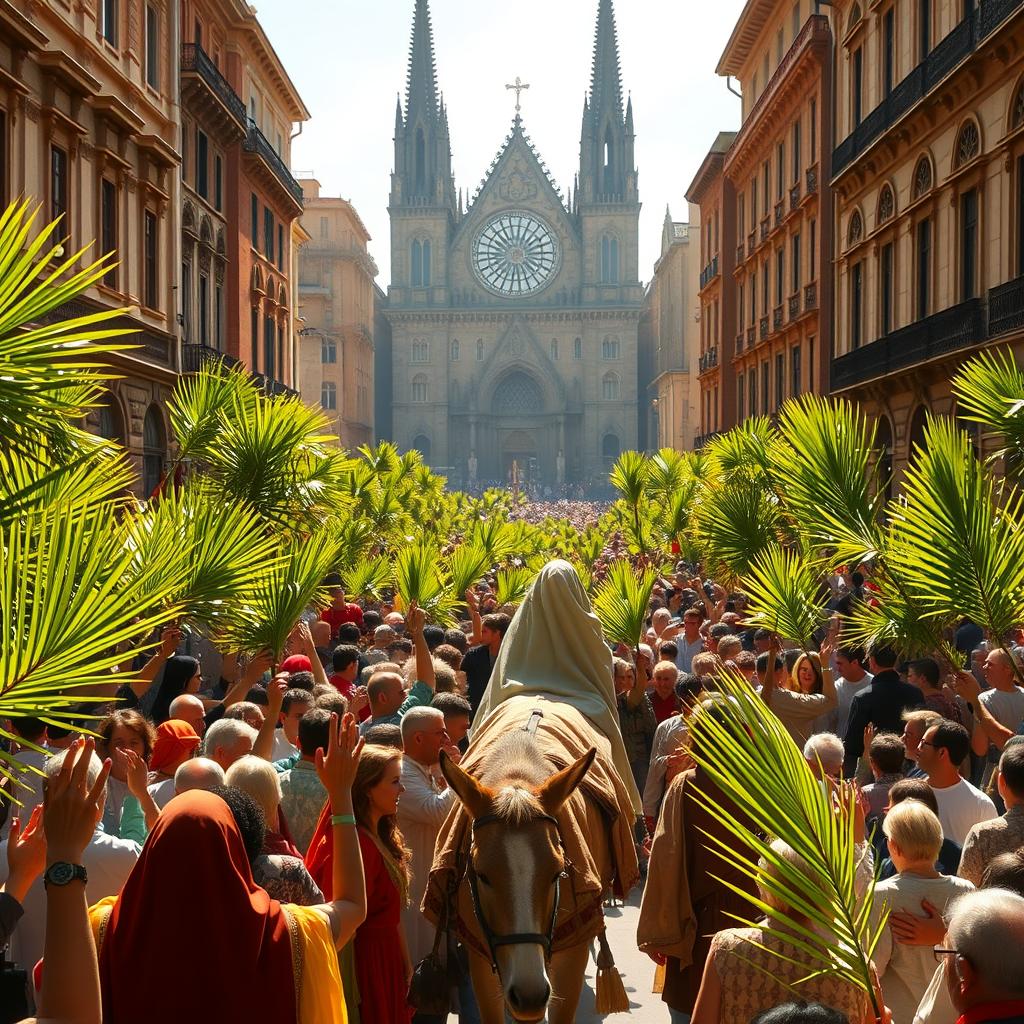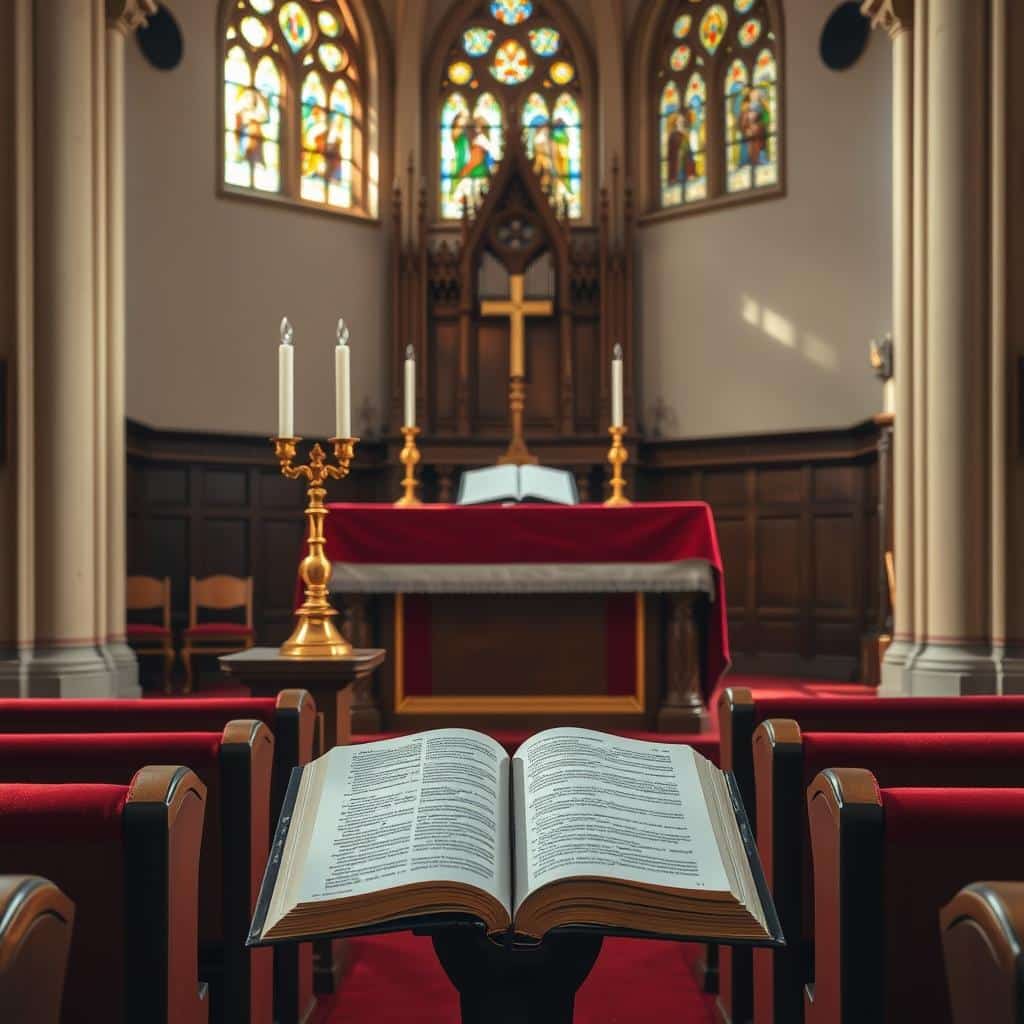Palm Sunday of the Lord’s Passion
This special day marks the start of the most sacred time in the Christian calendar. Across the world, believers gather to honor a moment of triumph and reflection. The liturgy of Palm Sunday of the Lord’s Passion blends joy with solemnity, mirroring the journey ahead.
Ancient traditions come alive as people carry branches, echoing scenes from scripture. Readings from Luke’s Gospel highlight both celebration and sacrifice. This duality invites deep spiritual connection.
From processions to prayers, the observance unites diverse cultures. It’s a powerful reminder of shared faith and hope. Themes of redemption and fulfillment resonate through every ritual.
Candle Making Made Easy: Create Stunning Decor with Our Guide.
Basic Catholic Prayers: Essential Devotions for Faith.
The Significance of Palm Sunday in the Christian Faith
Few moments in faith carry the weight of triumph and sorrow like this sacred observance. It bridges Jewish Passover traditions with Christ’s entry into Jerusalem, where crowds hailed Him as king. Palms waved in victory, yet the shadow of the cross loomed.
This liturgy marks a pivotal time in Scripture. Old Testament prophecies, like Zechariah’s humble king on a donkey, find fulfillment. The crowd’s “Hosanna” echoes ancient praises, but Jesus wept for Jerusalem’s blindness.
The paradox is striking: a Messiah welcomed as royalty, yet walking the way to death. Red vestments symbolize His dual role—crimson for martyrdom, yet regal in sacrifice. The Temple veil’s tearing later would signify a new covenant.
Palm branches, once symbols of earthly triumph, now point to Christ’s kingdom. They remind believers that true victory comes through surrender. This day prepares hearts for Holy Week’s journey from shouts to silence.
In every procession and prayer, the Church relives this tension. Joy and sorrow intertwine, inviting deeper reflection on the cost of redemption. It’s a call to follow, even when the road turns steep.
The Procession with Palms: Gospel of Luke 19:28-40
A humble donkey carried the Messiah into Jerusalem, fulfilling ancient prophecies. Luke’s account reveals a deliberate choice—a colt, not a warhorse, embodying *peace* and humility. This moment echoed Zechariah 9:9, where a king arrives “gentle and riding on a donkey.”
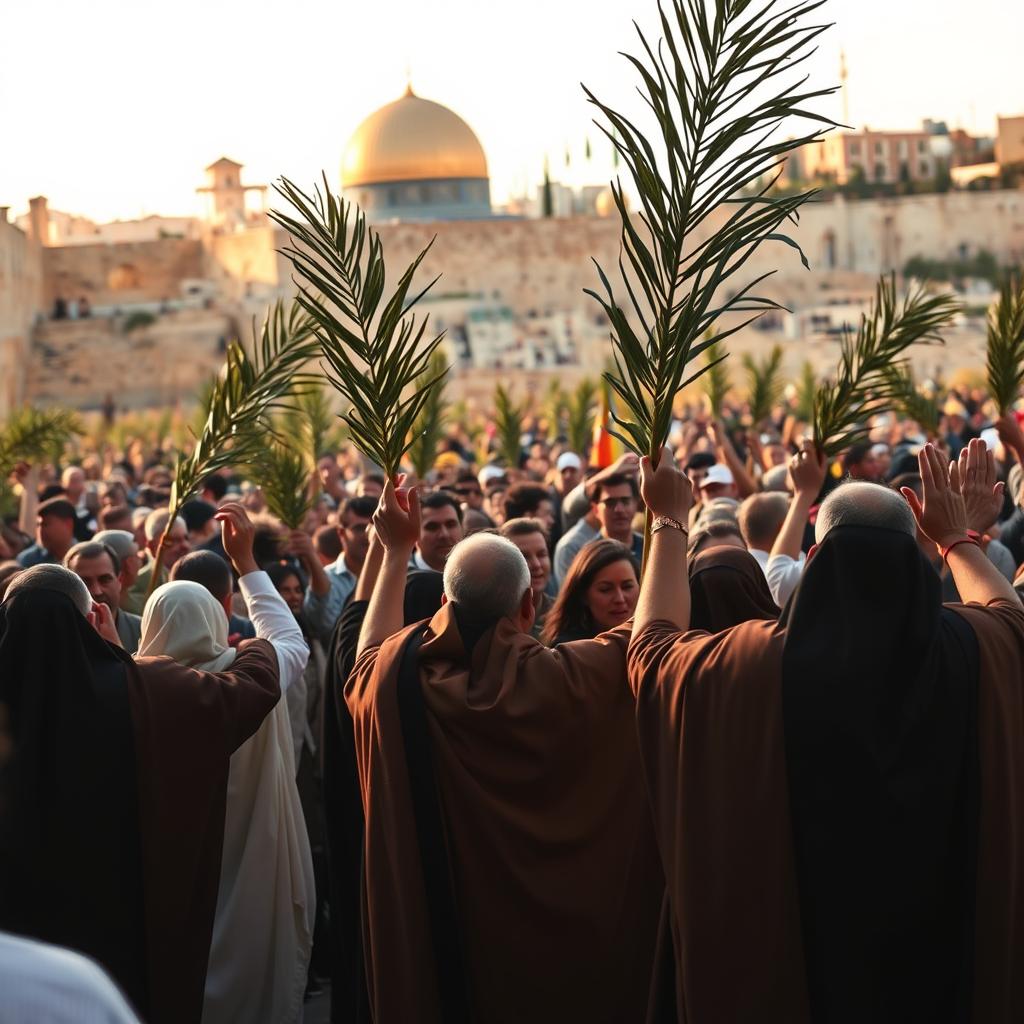
Jesus’ Triumphal Entry into Jerusalem
The *disciples* obeyed Jesus’ instructions precisely, securing the colt from Bethphage. Their faith mirrored the crowd’s enthusiasm, who spread cloaks and branches like a royal carpet. This act mirrored 2 Kings 9:13, symbolizing recognition of divine authority.
Geographically, the route from Bethphage to the Temple Mount held deep significance. It traced a path of prophetic fulfillment, underscoring Jesus’ role as the promised *king*. The donkey’s presence contrasted sharply with Roman warhorses, declaring a *kingdom* built on sacrifice, not conquest.
The Crowd’s Acclamation and Prophetic Fulfillment
Shouts of “Blessed is the *king* who comes in the *name* of the Lord!” (Psalm 118:26) filled the air. The *people* recognized Jesus as the Messiah, yet their understanding was incomplete. Their praise foreshadowed the cross, where true victory would unfold.
Pharisees objected, demanding Jesus silence the crowd. Their skepticism highlighted the tension between institutional religion and divine revelation. Meanwhile, palm branches—symbols of Jewish nationalism—became tokens of a spiritual revolution.
“If these were silent, the very stones would cry out.” (Luke 19:40)
This procession wasn’t just a celebration; it was a divine appointment. Every detail—from the donkey to the shouts—pointed to a *place* in history where heaven touched earth. The palms waved that day still whisper of a *peace* purchased through surrender.
Mass Readings for Palm Sunday of the Lord’s Passion
Three pivotal texts reveal the heart of the Passion story. Isaiah’s prophecy, David’s psalm, and Paul’s hymn intertwine to illuminate Christ’s sacrifice. Each reading deepens our understanding of redemption’s cost.

Reading I: Isaiah 50:4-7 – The Suffering Servant
Isaiah’s *suffering servant* prefigures Christ’s endurance. “I did not hide My *face* from shame” (v6) mirrors Jesus’ silence before His accusers. The servant’s obedience—despite struck *hands* and mocking—points to Calvary.
This passage underscores divine solidarity with human pain. The *body* broken becomes a bridge between God and humanity. Every wound fulfills a promise.
Responsorial Psalm: Psalm 22 – A Cry of Anguish and Trust
David’s lament becomes Jesus’ prayer on the cross. “They divide my garments” (v18) foreshadows soldiers casting lots. Mockers echo verse 8: “He trusts in the Lord; let Him deliver Him!”
Yet the psalm shifts from despair to hope. “The poor will eat and be satisfied” (v26) hints at resurrection. *Blood* and tears give way to triumph.
Reading II: Philippians 2:6-11 – The Humility of Christ
Paul’s hymn celebrates kenosis—the *emptying* of divine glory. “He humbled Himself to *death* on a cross” (v8) defines sacrificial love. The cross bends every knee, fulfilling Isaiah 45:23.
“At the name of Jesus, every knee shall bow.” (Philippians 2:10)
This liturgical journey—from prophecy to fulfillment—invites us to kneel beside the centurion. In the *face* of such love, how can we respond except with awe?
The Passion Narrative: Gospel of Luke 22:14—23:56
Luke’s Passion narrative unfolds with profound intimacy and sacrifice. From the Last Supper to the tomb, each moment reveals the depth of divine love. This account challenges believers to reflect on the cost of redemption.
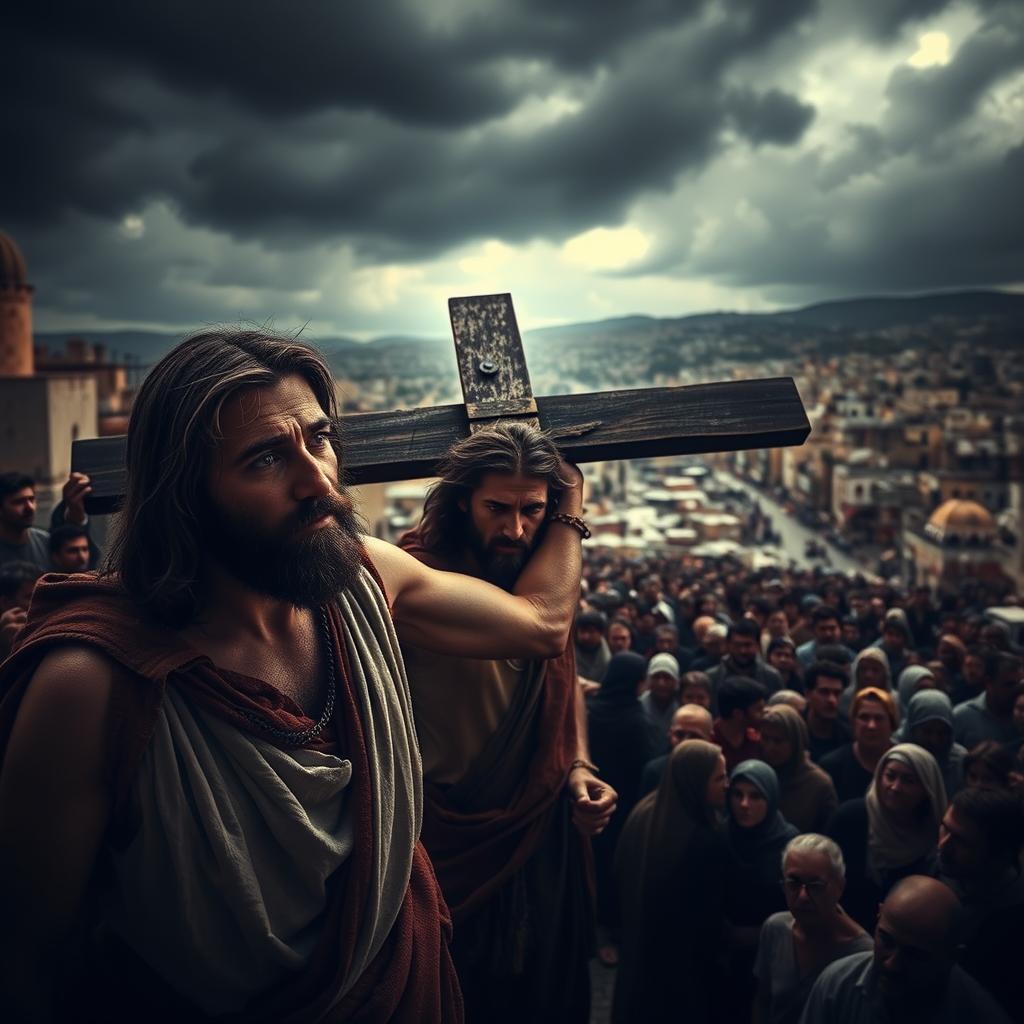
The Last Supper and the Institution of the Eucharist
Jesus shared Passover with His disciples, transforming bread and wine into eternal symbols. “This is My body” (Luke 22:19) established a covenant sealed with His blood. The meal foreshadowed the cross, where He would become the ultimate sacrifice.
Jesus’ Agony in the Garden of Gethsemane
In Gethsemane, Jesus prayed with such intensity that His sweat resembled blood. “Not My will, but Yours” (Luke 22:42) showed perfect surrender. The disciples slept, unaware of the coming trial.
The Betrayal by Judas and Peter’s Denial
Judas betrayed Jesus with a kiss—a stark contrast to Simon of Cyrene’s forced service. Peter’s three denials fulfilled Jesus’ prediction, yet later, his tears marked the beginning of restoration.
The Trial Before Pilate and the Crowd’s Choice
Pilate declared Jesus innocent three times (Luke 23:4, 14, 22). The crowd chose Barabbas, a criminal, over the son of God. Political fear overruled justice.
The Crucifixion and Jesus’ Final Words
On the cross, Jesus spoke forgiveness: “Father, forgive them” (Luke 23:34). Darkness covered the land as the Temple veil tore—symbolizing open access to God. His final cry, “Into Your hands,” echoed complete trust.
“Today you will be with Me in Paradise.” (Luke 23:43)
The Burial and the Women at the Tomb
Joseph of Arimathea courageously requested Jesus’ body. Women from Galilee witnessed the burial, preparing spices for a day they didn’t yet understand would reveal resurrection hope.
The Role of the Disciples During the Passion
Fear and failure marked the *disciples*’ journey through the Passion narrative. Their actions reveal a stark contrast between human frailty and divine purpose. From bold promises to broken vows, their story mirrors our struggles today.
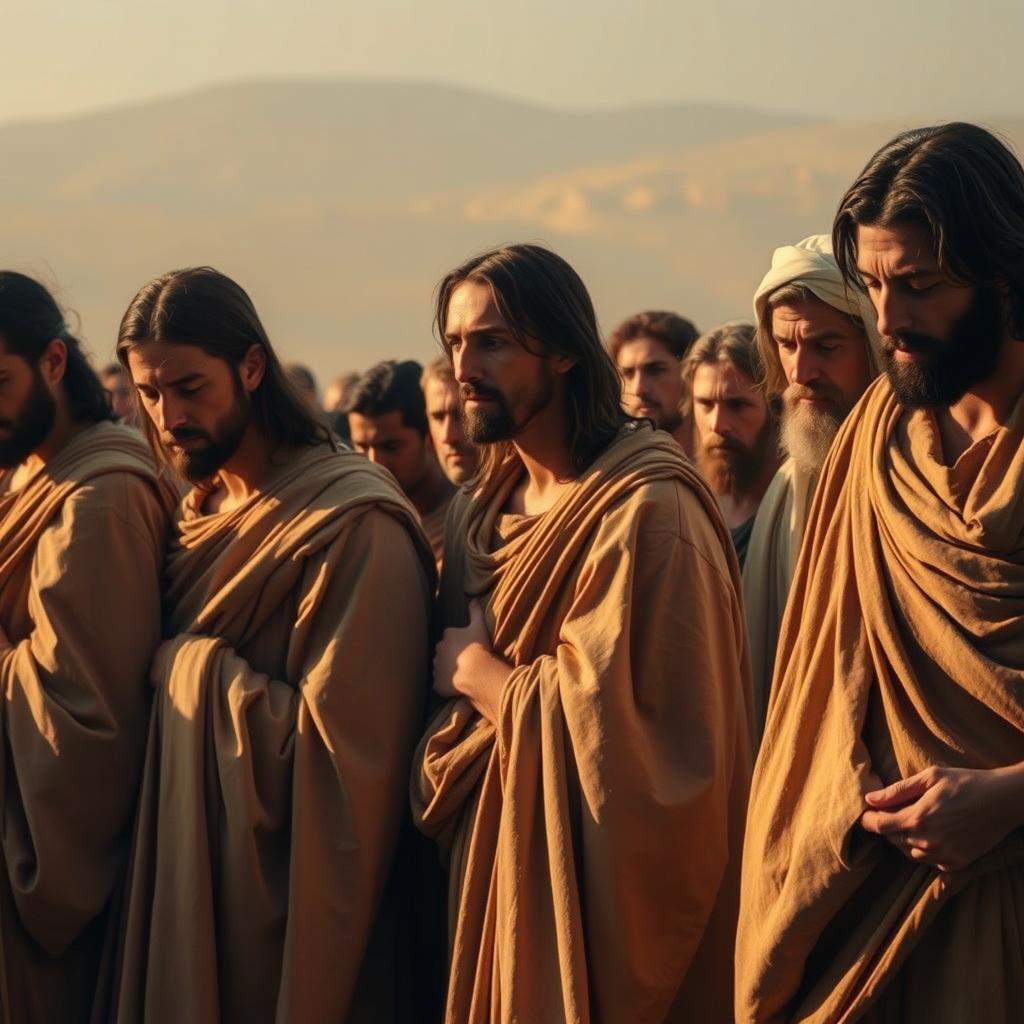
Peter swore loyalty but denied Jesus three times before dawn. Each refusal distanced him further—until their eyes met. Luke records the moment:
“The Lord turned and looked straight at Peter… He went outside and wept bitterly.” (Luke 22:61-62)
John alone stood near the cross. Jesus entrusted His mother to this beloved *disciple*, showing grace amid agony. The others had fled earlier, their *hands* empty of courage.
| Disciple | Action | Transformation |
|---|---|---|
| Peter | Denied Jesus | Became a church pillar |
| John | Stayed at the cross | Cared for Mary |
| Others | Fled (Mark 14:50) | Preached globally later |
The *way* these men fell and rose again offers hope. Their failures weren’t final. Like them, we waver under pressure—yet redemption waits.
Women like Mary Magdalene showed unwavering faith. They followed every step to the tomb. Their loyalty highlights how *people* respond differently to trials.
Modern believers face similar tests. Will we keep *distance* or draw near? The Passion invites us to choose courage, even when fear shouts louder.
The Symbolism of the Cross in Palm Sunday Liturgy
Roman execution tools rarely become sacred symbols—except for one remarkable case. The cross, designed to inflict maximum shame, became Christianity’s ultimate emblem of hope. Its transformation mirrors Christ’s victory over death through apparent defeat.

Pilate’s inscription “Jesus of Nazareth, King of the Jews” (John 19:19) crowned this paradox. Written in three languages, it mocked while unintentionally proclaiming truth. The son of God redefined kingship from that wooden throne.
| Cross Type | Liturgical Use | Symbolic Meaning |
|---|---|---|
| Processional | Carried ahead of worshippers | Christ leading believers |
| Altar | Central church focus | Sacrifice made present |
| Sanctuary | Behind communion table | Eternal redemption |
Darkness during the crucifixion echoed Exodus’ ninth plague. Just as Egypt’s night carried warning, Golgotha’s shadows signaled deliverance. The cross became the new Passover lamb.
“What I have written, I have written.” (John 19:22)
Good Friday’s Veneration of the cross completes this journey. Believers kneel before what was once feared, touching wood that bridges heaven and earth. The instrument of torture now offers life.
Every palm branch waved during processions points to this truth. Triumph comes not through power, but surrender. The cross stands empty—yet full of meaning for all who approach.
The Contrast Between Joy and Sorrow on Palm Sunday
Few celebrations embody such stark emotional contrasts as this sacred observance. Within days, cheering people waving palms became a mob demanding crucifixion. This whiplash reveals profound truths about human nature and divine purpose.

The crowd’s “Hosanna” (Matthew 21:9) and “Crucify him” (27:22) expose our fickle hearts. Like spring weather, devotion often shifts rapidly. Yet in this tension, we see Christ’s steady love—applauded or abandoned.
Liturgical chant modes mirror this journey. Joyful antiphons during the procession give way to somber tones during the Passion reading. The Stabat Mater’s mournful melody later captures Mary’s grief, connecting personal loss with cosmic redemption.
“My God, my God, why have you forsaken me?” (Matthew 27:46)
Modern believers know this emotional terrain. Career triumphs collapse into hospital vigils. Wedding celebrations precede divorce papers. The day teaches us to hold both joy and sorrow as sacred.
Palm branches, once symbols of victory, now remind us that true triumph comes through sacrifice. This time of year invites honest reflection—where have our praises turned to betrayal? What things in life demand such sober reckoning?
Ultimately, the contrast isn’t about human failure but divine faithfulness. Whether welcomed with palms or nailed to a cross, Christ’s mission remained unchanged. That consistency offers hope when our emotions waver.
The Centurion’s Declaration: “Truly This Man Was the Son of God”
Amidst the chaos of crucifixion, a Roman soldier spoke words that shook history. The centurion, positioned directly before the cross, witnessed something that shattered his military worldview. His confession—”Truly this man was the son of God”—marked an extraordinary moment of clarity.
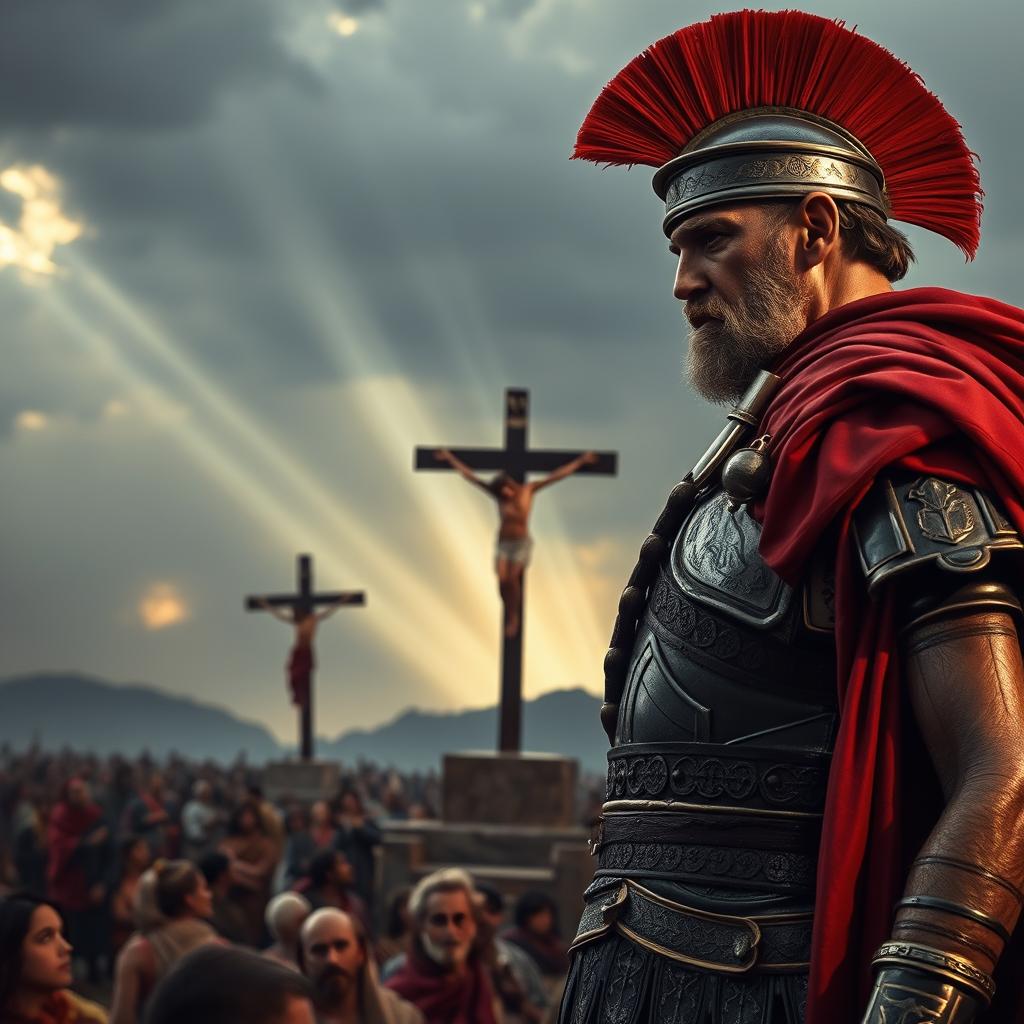
Roman centurions commanded 80-100 soldiers, embodying imperial power. They enforced Caesar’s cult, requiring worship of the emperor as divine. For such an officer to declare a crucified criminal as God’s son risked career and life.
| Roman Belief | Centurion’s Declaration | Implication |
|---|---|---|
| Emperor as god | Jesus as divine | Challenged imperial authority |
| Cross as shame | Cross as revelation | Redefined power |
| Military honor | Spiritual truth | Transcended duty |
Three hours of darkness and an earthquake preceded his realization. These signs mirrored Old Testament prophecies about the day of the Lord. The soldier connected cosmic events with the dying man’s words:
“Father, forgive them, for they know not what they do.” (Luke 23:34)
Early Christians cherished this testimony. It appears in Mark’s Gospel within thirty years of the event. The confession became foundational for creeds affirming Jesus’ divine nature.
Modern believers face similar moments of truth. Like the centurion, we must sometimes declare unpopular convictions. His courage reminds us that revelation often comes in life’s darkest hours.
The soldier’s words still challenge others to reconsider who Jesus truly is. In a world valuing power over sacrifice, his declaration remains revolutionary. It invites all to see beyond surface appearances to eternal realities.
Reflections on the Passion for Modern Believers
Simon of Cyrene’s unexpected act still speaks volumes today. Forced to carry a stranger’s cross, he models how we might bear others‘ burdens—even when inconvenient. His story challenges us to see divine appointments in interruptions.
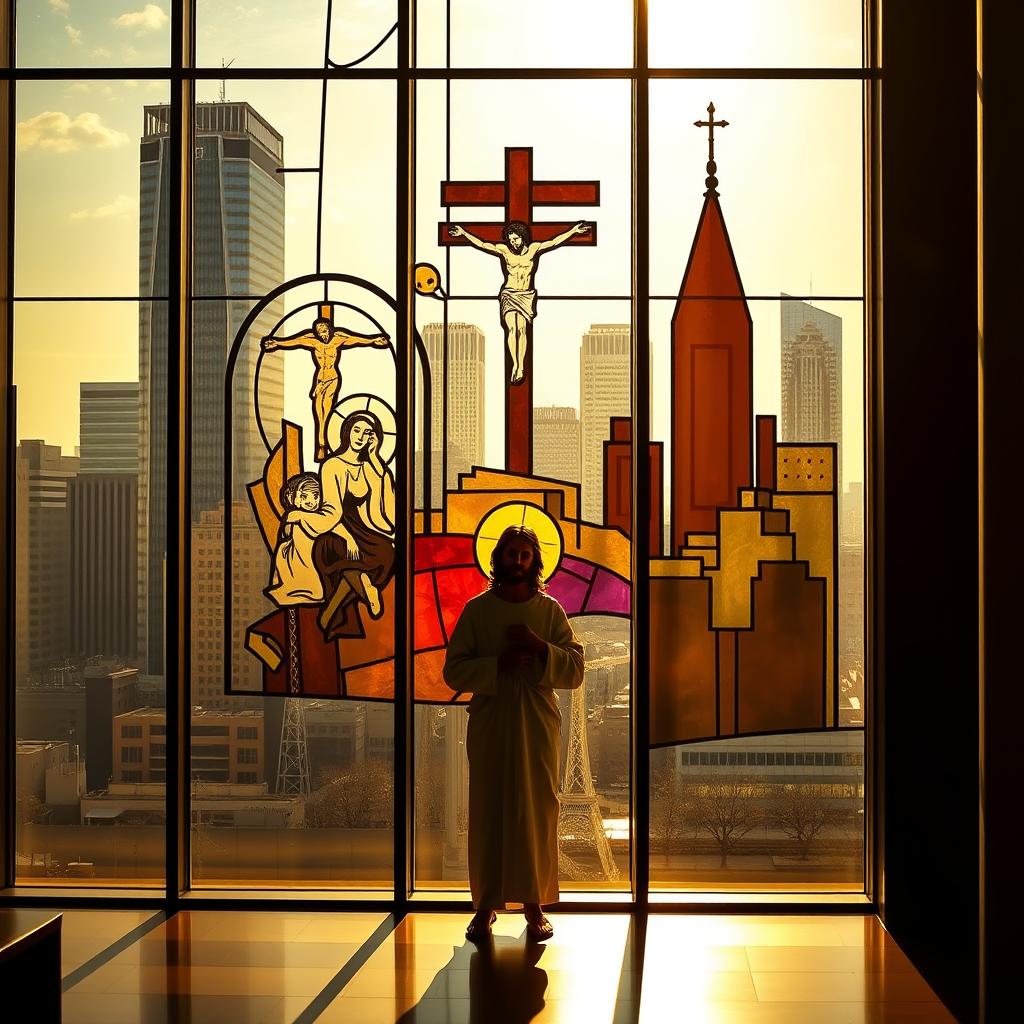
The crowd’s shifting loyalty mirrors social media dynamics. One moment people cheer; the next, they cancel. Like those in Jerusalem, we often follow trends rather than truth. The Passion invites us to examine our consistency.
Those with chronic illness understand redemptive suffering deeply. Their daily way of enduring pain mirrors Christ’s journey. Their perseverance reveals how death to self can bring life to others.
| Ancient Moment | Modern Parallel | Action Step |
|---|---|---|
| Last Supper | Eucharistic celebration | Receive communion intentionally |
| Simon’s service | Random acts of kindness | Help strangers practically |
| Women at the cross | Hospital visitation | Comfort the suffering |
The Eucharist connects us directly to that final meal. As Jesus took bread in His hands, we now receive His presence. This sacred meal transforms remembrance into ongoing relationship.
“Take up your cross daily and follow me.” (Luke 9:23)
Practical Holy Week engagement might include: – Reading one Gospel account aloud – Serving at a homeless shelter – Writing forgiveness letters – Observing silence from noon-3pm Friday
Every generation faces the same choice—wave palms superficially or follow sacrificially. The Passion isn’t just a story; it’s an invitation to walk the same way of love.
How Palm Sunday Prepares Us for Holy Week
Between waving branches and empty tombs lies Christianity’s most transformative week. These sacred days form a spiritual journey from celebration to resurrection.

The Triduum begins with the Last Supper’s intimacy. Maundy Thursday’s foot washing demonstrates Christ’s servant leadership. Families might reenact this with basins and towels, discussing humility.
Tenebrae services use growing darkness to symbolize the world’s rejection of light. Extinguished candles mirror the disciples’ fading courage. Yet one candle remains—hope surviving even in shadows.
“A new command I give you: Love one another as I have loved you.” (John 13:34)
Chrism Mass highlights sacramental oil consecration. Priests renew vows, affirming their way of service. This ritual connects earthly ministry to Christ’s eternal kingdom.
Good Friday’s solemnity contrasts with Easter Vigil’s joy. The progression teaches that redemption requires both sacrifice and victory. Consider these family activities:
- Create a Passion story timeline with drawings
- Bake unleavened bread for Thursday supper
- Plant seeds as resurrection metaphors
Palm Sunday’s liturgy sets this sacred time in motion. From triumphant entry to empty tomb, every ritual invites deeper participation. The journey changes those who walk it faithfully.
The Enduring Message of Palm Sunday of the Lord’s Passion
A king riding a donkey redefined power for all generations. His love’s path led to a cross, proving true strength lies in sacrifice. This day invites us to worship not with shouts alone but with surrendered lives.
Scripture paints a scene where people of every age wave palm branches (Revelation 7:9). Their praise echoes beyond time, reminding us that the Son’s sacrifice changed the world forever. Even now, martyrs mirror His Passion through costly devotion.
Will we remain spectators or step onto the road of discipleship? The empty tomb awaits, promising that surrender transforms death into life. Let palms remind us: victory comes through service.
FAQ on Palm Sunday of the Lord’s Passion
What is the meaning behind the procession with palms?
The procession symbolizes Jesus’ triumphant entry into Jerusalem, fulfilling prophecy as crowds welcomed Him with palm branches, praising Him as king.
Why is Palm Sunday also called the Lord’s Passion?
It marks both Jesus’ joyful entry and the beginning of His suffering, linking celebration with the solemn remembrance of His sacrifice.
How do the readings connect to Jesus’ journey?
Isaiah’s prophecy, Psalm 22’s lament, and Paul’s words in Philippians all foreshadow Christ’s humility, suffering, and ultimate victory.
What role did the disciples play during the Passion?
They witnessed His agony, betrayal, and death—some fled, others denied Him, but their stories remind us of human frailty and redemption.
Why does the crowd’s mood shift from joy to condemnation?
Their cries of “Hosanna” turn to “Crucify Him,” revealing how quickly devotion can falter—a call for steadfast faith today.
What does the centurion’s declaration teach us?
His words, “Truly this man was the Son of God,” show that even in darkness, truth shines through, inviting all to recognize Christ’s divinity.
How can we reflect on the Passion in modern life?
By embracing sacrifice, forgiveness, and trust in God’s plan—just as Jesus did—we find strength in our own struggles.
What’s the significance of the cross in Palm Sunday liturgy?
It bridges triumph and suffering, reminding us that true victory comes through love and self-giving, even unto death.
